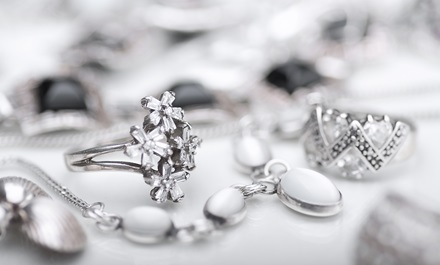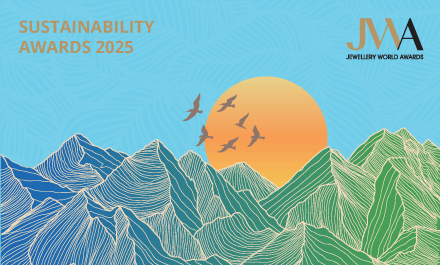With the Covid-19 vaccine rollout underway, the diamond industry is headed towards measured recovery. Trends and practices that emerged or accelerated during the pandemic – from virtual meetings, digital marketing and e-commerce to greater focus on sustainability and traceability – will however continue to shape the global diamond trade moving forward.
The Covid-19 pandemic took a toll on the diamond industry in 2020, affecting the whole value chain. Lockdowns and social distancing policies, coupled with medical and economic uncertainties restrained the operations of brick-and-mortar retailers, limited wedding-related sales, and reduced self-reward and gifting purchases.
Travel restrictions and the cancellation of flights and trade shows threw a wrench in the usual business practice of meetings and viewings while limiting the shipment and delivery of diamonds. Factories operated at low capacities due to reductions in rough supply, staff and demand.
The coronavirus pandemic continues to cast a shadow over global diamond trade in 2021 but signs of recovery are emerging. Covid-19 is also leaving its mark on the sector through the accelerated adoption of digital initiatives, advanced technologies and new ways of doing business.
Yoram Dvash, president of the World Federation of Diamond Bourses (WFDB), said the coronavirus’ impact on the sector was early, rapid and extensive. Key markets in Asia including mainland China and Hong Kong – vital to the diamond trade – were hit in January 2020. Europe and the US followed in March. Polished diamond sales plummeted by 80 per cent in all the major centres, from the beginning of the year until July.
“When mainland China and other parts of Asia began bouncing back, diamond trading began to climb, even reaching 2019 levels by July. Fortunately, the US market, although still suffering from high levels of Covid-19, is returning to activity, and the holiday season at the end of the year looked quite good. So 2020 was not a total washout for the diamond and jewellery industry,” Dvash said.
Changing business landscape
Aside from dampening sales, the pandemic also altered how wholesale diamond trade is conducted, the WFDB official noted.
Where diamantaires used to travel extensively to meet clients, they realised in 2020 that business processes could be streamlined through online platforms, which are more efficient, quicker and less expensive. This trend will most certainly remain.
The trade is also increasingly receptive of advanced technologies and new business models. Dvash believes this will come easier to younger generations. He noted that the WFDB’s Young Diamantaires group of dynamic diamond and jewellery professionals are already making a significant impact on the industry as a whole.
Online alternatives proved valuable when traditional business platforms were disrupted by the pandemic. Trade shows – a pivotal component of the diamond trade – were cancelled in 2020, and many early 2021 events have been postponed to later in the year.
The diamond business however is based on trust and relationship, and not everything can be done online. Trade fairs provide an essential platform to meet old contacts, find new ones from every part of the world, view goods and deliver orders within a few days. The major shows will resume in the second half of 2021.
“The pandemic has pushed the diamond industry out of its comfort zone and forced us to conduct business virtually. Online tenders and trade shows may be here to stay well past the pandemic. E-commerce has really been a saviour for the international jewellery industry,” declared Colin Shah, chairman of India's Gem & Jewellery Export Promotion Council (GJEPC).
Balanced retail strategy
The digital transformation of the diamond industry extends to jewellery retail, where online-offline strategies now abound.
According to The Diamond Insight Report 2020 of the De Beers Group, shoppers are prepared to return to shopping in-store, under health precautions. Reassuring them of the safety of the purchasing process will be a top priority for retailer communications, but online channels inevitably remain an important way to browse and purchase.
Consumers with budget tend to buy what they know and trust, making timeless classics such as solitaires attractive. Diamond jewellery that celebrates new types of union, life milestones or new forms of personal expression is likely to find an eager market.
Dvash said, “We must embrace multichannel marketing – combining online and in-store sales. This trend will impact 2021 and beyond. People will want to have the in-store shopping experience, but they will not give up the ease and comfort of shopping from home.”
Ephraim Zion, founder of the House of Dehres, pointed out that the process of purchasing high-end diamond jewellery is often a cherished moment for most consumers.
“When they buy a diamond of two carats or bigger, they want to go to a store to see with their own eyes the brilliance, sparkle and beauty of the diamonds; to touch it and feel the excitement of the experience of buying a diamond. It is impossible to achieve that kind of emotional excitement and shopping experience over the Internet. The need for the emotional connection is a part of human nature that will never change,” he explained.
Fostering demand
One crucial challenge facing the diamond industry, even in pre-pandemic days, is marketing diamonds to millennials and Gen-Z consumers, noted Dvash.
GJEPC’s Shah added, “People might spend their disposable income on other luxury goods post-pandemic. The diamond industry must ensure it retains its share of the pie through proper promotional activities to create top-of-mind recall for diamonds among consumers.”
Zion underscored the need for publicity campaigns to highlight the emotional value of diamonds to consumers and promote the gem as an emotional object of beauty and a symbol of love and commitment.
“The new generation of consumers has yet to prioritise their diamond purchase. This can be changed through publicity campaigns, which ensure consumer confidence regarding the value of diamonds, so they won’t gravitate to other luxury products,” Zion said. “Diamonds are also bought as a store of wealth, a financial security and a vehicle for capital preservation. And when I do business, I put emphasis on the most important element – trust and professionalism.”
The Natural Diamond Council (NDC), representing seven of the world’s leading diamond producers, has taken up the cudgels for generic diamond advertising, with particular emphasis on engaging diamond narratives for millennials and Gen Z consumers.
Originally the Diamond Producers Association, the industry body unveiled its new brand name and consumer identity, Only Natural Diamonds, last June. The OND brand and online platform is designed to appeal to modern sensitivities by also showcasing trends, fashion and sustainability matters.
NDC’s first celebrity-fronted campaign, For Moments Like No Other, starring actress Ana de Armas, was released in September 2020, launching at the virtual Emmy Awards for maximum exposure.
The campaign celebrates the many emotional connections created by diamond jewellery, a theme that resonates strongly as the world emerges from the Covid-19 crisis.
NDC has transformed itself into a digital publisher too, offering content on the values and heritage of natural diamonds to help build affinity with younger generations. Aside from consumer engagement, NDC media assets are available for the trade to use in their own marketing efforts. The council is rolling out more retailer-support materials and initiatives to help boost the appeal of diamond jewellery in their markets.
In a recent statement, NDC CEO David Kellie commented, “If we speak to our consumer in the language of the ‘emotional dream’ and we maximise our opportunities in many digital environments, then there are undeniably significant opportunities for future growth for natural diamonds.”
Higher standards
The diamond industry is also under unprecedented pressure to improve its supply chain transparency, driven by a global push for sustainability and increased consumer demand for ethical sourcing.
Dvash said, “Younger consumers demand transparency, sustainability and the safeguarding of human rights. Parts of the industry are already selling their stones with full provenance and traceability information. Moving forward, the entire diamond industry will need to adopt these standards.”
These new customer requirements are spurring technological innovation in the diamond trade.
Research by the Gemological Institute of America (GIA) showed that 69 per cent of US bridal consumers would prefer to buy a diamond with an origin story. The GIA Diamond Origin Report enables consumers to learn more about their diamond’s journey and the positive impact it had on communities where it was mined.
Blockchain technology enables greater transparency, traceability and data security.
Leading blockchain technology provider Everledger partnered with Chinese online retail giant JD.com and GIA in 2020 in order to bolster transparency in online diamond purchases.
Through blockchain interoperability technology, the Everledger platform synchronises the diamond grading information from GIA to JD.com's blockchain anti-counterfeiting and tracing programme to provide customers with independently verified diamond certificates and origin information. This data will be made available to JD.com's more than 380 million users. “No one could have predicted where 2020 would take us: Its last six months alone have produced more digital transformation than the last decade, with every transformation effort already underway finding itself accelerated, and at scale. Blockchain and artificial intelligence (AI) are at the heart of e-commerce and community,” noted Everledger CEO Leanne Kemp.
GIA is also collaborating with IBM to bring AI to diamond grading. GIA President and CEO Susan Jacques remarked, “The use of AI, digital reports and blockchain are all great examples of how technology is transforming the marketplace, which has accelerated the rate of innovation and application. In 2021, we expect the trends that accelerated during the 2020 pandemic to gain speed – the continued digital transformation and the growing importance of sustainability, transparency and ethics.”
Geopolitical advances
The diamond industry is also witnessing fundamental shifts in its geopolitical landscape.
The Abraham Accords signed by Israel with the United Arab Emirates and with Bahrain are a game changer for the Israeli diamond industry, according to Dvash, who is also the chairman of the Israel Diamond Institute (IDI). Dubai Multi Commodites Centre (DMCC) opened a representative office in the Israel Diamond Exchange (IDE) in December 2020, and IDE is scheduled to establish a presence in DMCC soon. IDE has also signed a Memorandum of Understanding with the Bahrain Bourse. The new agreements enable Israeli diamond companies to reach new markets in the Middle East and Asia, allow Israel to tap the UAE’s rough diamond market, and offer Emirati companies access to Israel’s polished
diamond hub.
“This will impact the global diamond industry. It is a win-win situation for all, opening up huge opportunities and new growth spots for the global diamond industry. Open borders between all of the major diamond centres will make trade freer and encourage the growth of business worldwide,” said Dvash.
Meanwhile, India is enhancing its viability as a diamond trading hub. At present, international mining companies send rough diamonds to the Special Notified Zones (SNZs) for viewing – not selling, lest they be regarded as permanent entities and levied income tax in India. Miners then bring the rough back to Antwerp or Dubai before shipping them to India, adding to the final price of the material.
As part of the Covid-19 relief measures, GJEPC has requested the Indian government to impose a turnover tax of no more than 0.16 per cent – the same rate as levied in Antwerp – so that mining companies can log their sales in India and eliminate the back-and-forth shipment that only balloons prices. The measure would increase India’s tax collection and reduce logistics and foreign office costs for Indian firms.
“If the Indian government approves the Turnover Linked Tax Rate on the sale of rough diamonds in SNZs, it will put India at par with other trading hubs like Antwerp,” said Shah.
Also, India’s voluntary ban on rough imports helped ease excess inventory. According to Shah, GJEPC is also working with the government and bank authorities to address the sector’s main concerns, including the lack of financing from banks and the high import duties on diamonds and gold.










